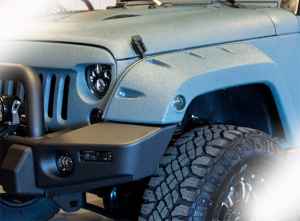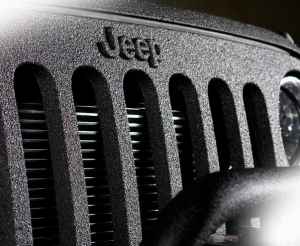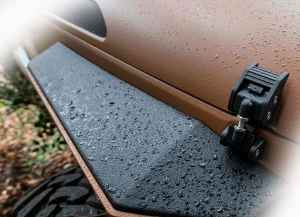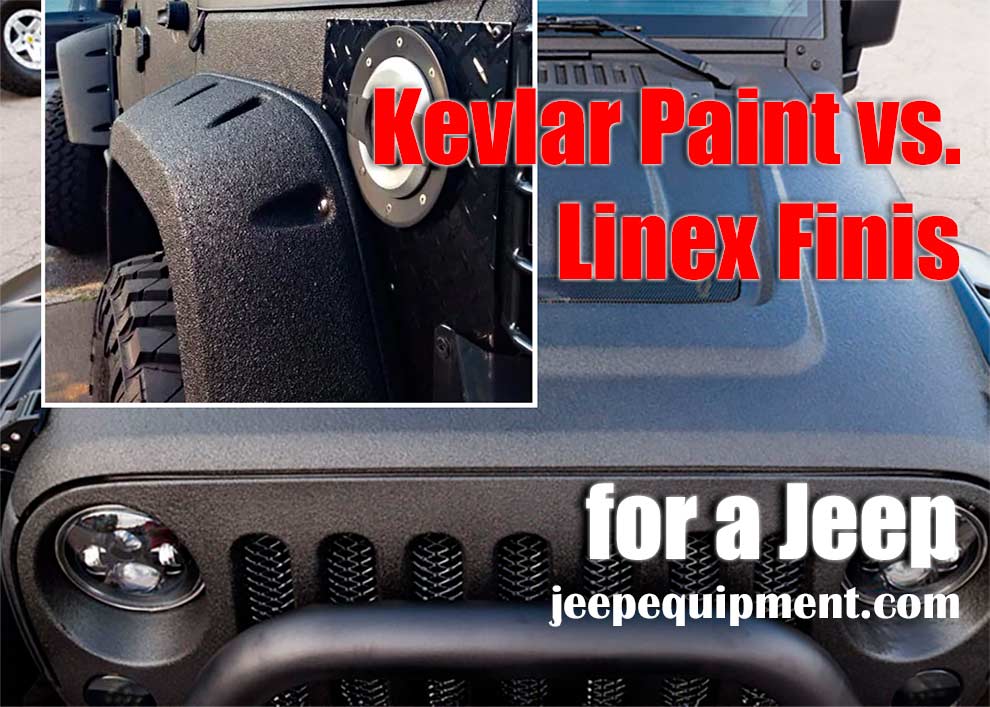In this comprehensive guide, we delve into the comparison between the kevlar paint job and Line-X finish for a Jeep Wrangler, providing Jeep owners with essential insights on customization options for their vehicle’s exterior. We explore the durability, ease of application, cost considerations like kevlar paint job cost, and maintenance aspects of both coatings. Whether you’re looking to apply kevlar coating to your vehicle or considering the bedliner option, this article will help protect your Jeep from the elements and wear.
Jeeps are some of the toughest and most durable vehicles on the planet. The engine, gearbox, and suspension system are of premium quality and never disappoint. The same can’t be said about the finish, though. While the factory paint is decent, over time, it does get overwhelmed by the rain, hail, UV rays, dust, wind, and other natural elements.

Ease of Use, Longevity, and More
Before we get to the meat and potatoes, I want to mention that both Line-X and Kevlar coating aren’t easy to apply. You’ll probably have to pay a professional to handle the “installation” for you. Otherwise, you might ruin it. Furthermore, these coatings are pretty much permanent: they last for many years, if not decades. And one more thing: once applied, these finishes will be VERY hard to remove.
That’s right: if you decide that you don’t like it, you’ll have to invest a lot of time, energy, and money in preparing the surface for a new layer of coating. That’s exactly why I decided to write this guide. To help you make up your mind so that you don’t regret your choice later! Also read here How to Keep Black Cars Clean.
Kevlar Paint: What’s It All about?
Known as “textured paint”, Kevlar paint looks pretty cool and does an incredible job of protecting pretty much any surface you cover it with. It’s a big commitment, though, and, as I just mentioned, it’s one of those once-in-a-lifetime decisions. Most commonly, Kevlar is used in making bullet proof vests. Other applications include instruments, sports equipment, tools, and such.

The Pros:
One of the best things about Kevlar – it doesn’t require maintenance. All you’ll need to clean it is a garden hose and maybe a couple of rags. It is an incredibly tough material that lasts for many decades. And, it looks amazing on a Jeep. So, if you own a rough-tough Wrangler, best believe Kevlar will transform it, make it look even better.
Kevlar isn’t very heavy and won’t affect performance in any way. On top of that, it is a 100% non-flammable material, resistant to rust, dust, mold, and mildew.
The Cons:
The biggest downside of this material is its weakness against the sun. Kevlar isn’t “afraid” of temperature extremes and can withstand a hot climate. However, it’s very weak against UV rays. The sun deforms it, makes Kevlar lose its strength, sturdiness, and durability. There’s a remedy for this, though – a layer of standard UV protection.
Another con has to do with the permanent nature of this material. I already mentioned that it will be pretty hard to remove it. You can, of course, add a new coat of whatever paint/material you’ve got, but it will look horrible and probably won’t last long. Oh, and did you know that Kevlar is a strong insulator? It is, so, you won’t feel very comfortable behind the wheel somewhere in the tropics.
What’s the Deal with Line-X?

The Pros:
Line-X is significantly cheaper than Kevlar. A professional body job at a premium-quality shop will cost you $3-4.5K, while Kevlar’s average price is $4.5-6K. Plus, Line-X is more resistant to UV rays. It will still deteriorate over time but at a much slower rate. It’s a thick rubberized coat, which is why it does a slightly better job of keeping dirt, dust, wind, humidity, and, again, sun rays at bay.
Another big Line-X pro is superb abrasion resistance and impact protection. This means it will protect the Jeep from a collision with a tree, bush, rock, or wild animal. Moreover, it dampens vibrations, which is also cool. A quick note: some experts recommend Rhino instead of Line-X, but it’s not as strong or reliable. Furthermore, it tends to fade rather quickly.
The Cons:
Much like Kevlar, this coating is almost impossible to remove. You’ll have to spend big bucks and put in a lot of effort to switch it for something else. Next, it’s way too textured for many Jeep fans. The matte characteristic is appreciated by some drivers, but, mostly, it’s not very popular. Personally, what I don’t like about Line-X is the fact that it’s very easy to scratch. And, it will be pretty hard (and expensive) to fix those scratches.
For further enhancements to your Jeep, consider exploring options for the best hood latches for Jeep. Upgrading to superior hood latches can significantly reduce hood flutter during high-speed driving or when navigating challenging terrains, ensuring your Jeep remains secure and stylish.
Conclusion
In conclusion, when deciding between a kevlar paint job and Line-X finish for your Jeep, it’s crucial to weigh the long-term benefits against the initial cost. Kevlar offers a super tough finish and resilience against most elements but falls short under UV exposure without additional protection. Line-X is cost-effective and UV resistant but can be prone to scratches and door dings. Both options require professional body work done to ensure a scratch-resistant and durable coat. Ultimately, the choice will depend on your budget, aesthetic preference, and the level of customization you desire for your Jeep Wrangler.
FAQ
1. How much does a kevlar paint job cost?
The average price of a kevlar paint job ranges from $4.5-6K, which varies based on the size of the vehicle and the rates of the dealers around you.
2. What are the benefits of adding a kevlar coating to your vehicle?
A kevlar coating provides a bedliner coating that is non-flammable, resistant to rust, and incredibly durable, making your vehicle less likely to see scratches.
3. How long does the process of spraying kevlar take?
The application of a kevlar coating takes several days as it involves preparation of the bare metal, application of the material, and curing time.
4. Can kevlar paint be considered the best paint option for SUVs?
Kevlar paint is often regarded as one of the best paint options for SUVs due to its body armor-like qualities, making it a popular choice for those looking for a durable and scratch-resistant finish.
5. Are there additional customization options available when applying a kevlar coating?
Yes, when applying a kevlar coating, there’s room for further customization, such as adding lift kits or a custom front grill, to make your vehicle stand out.
6. Is kevlar coating a cost-effective solution for protecting the exterior of your vehicle?
While the initial investment is higher, kevlar coating is a cost-effective long-term solution that helps keep your vehicle looking new by providing a bedliner coating that is sturdy and maintenance-free.

Add Comment